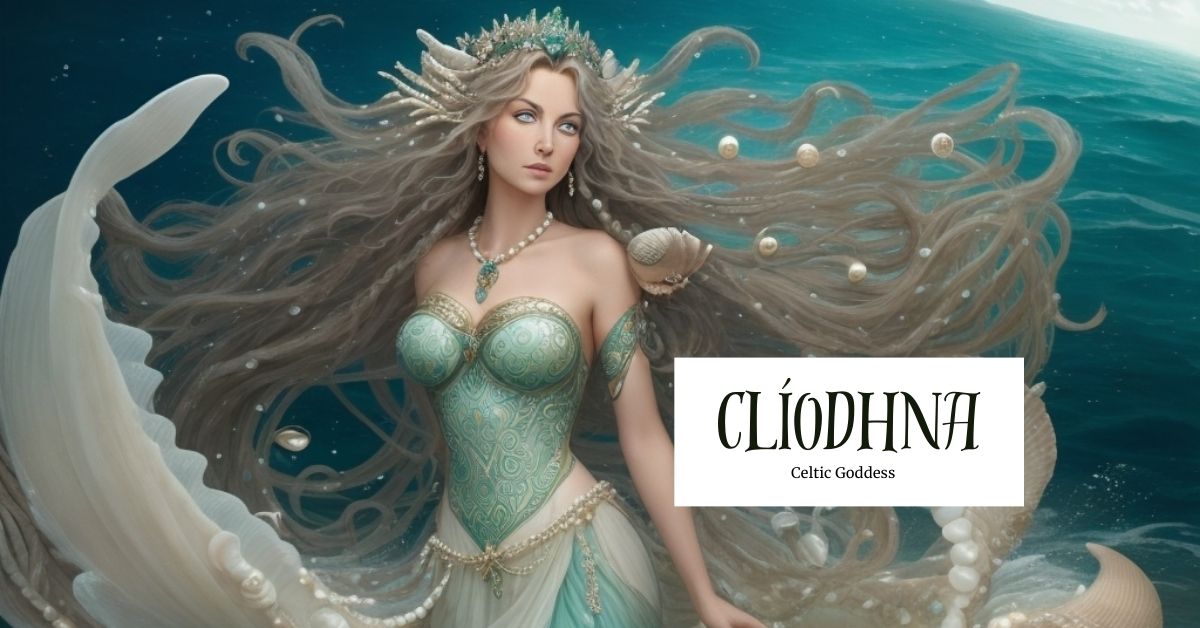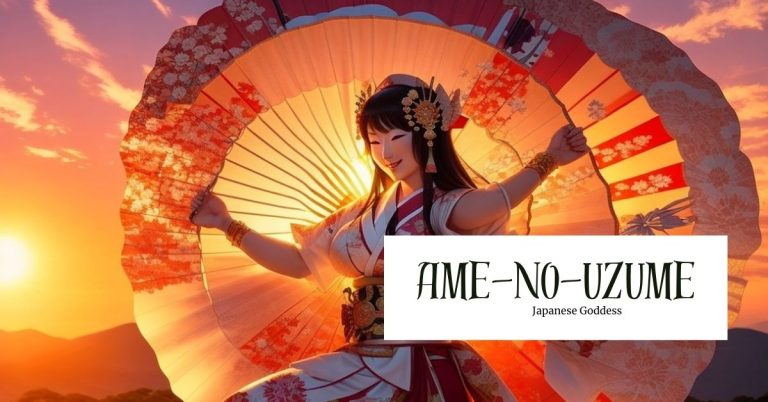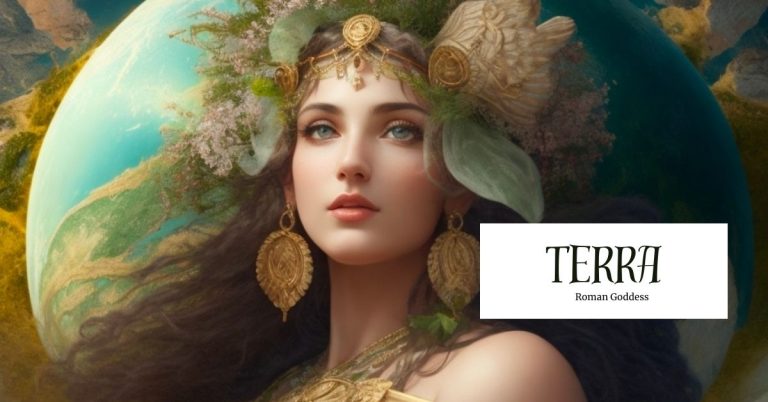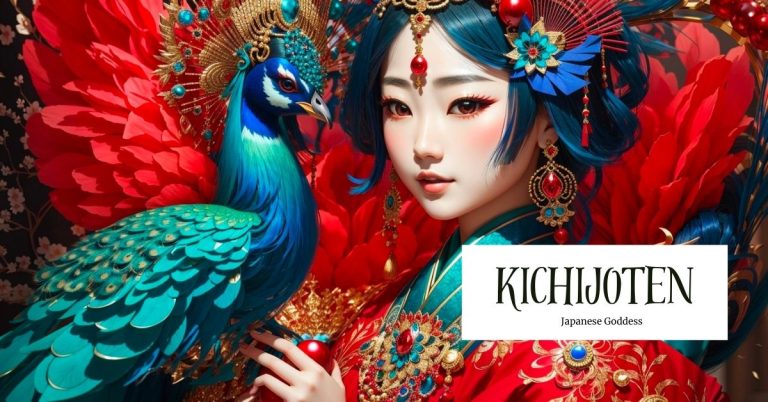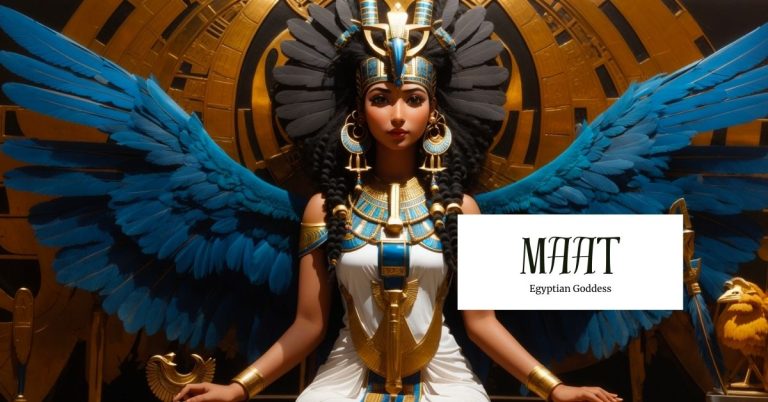Clíodhna: Goddess of Love, Beauty, and the Sea
As a goddess of love, beauty, and the sea, Clíodhna possesses an enchanting duality that resonates through ages past and present. Her tales, whispered through the winds and etched in ancient manuscripts, offer a glimpse into the intricate beliefs and cultural tapestry of the Emerald Isle.
From her role as a guardian of the sea to her associations with ethereal beauty, her influence reverberates not only through mythological narratives but also in contemporary interpretations. With each myth, Clíodhna emerges as a complex entity, a bridge between realms, a guardian of the seas, and a muse of poets.
Overview

Source: Amino
Clíodhna (pronounced KLEE-uh-nuh) is a prominent figure in Irish mythology associated with beauty, love, and the sea. She is often depicted as a beautiful woman with long, flowing hair, and she holds a special place in Celtic folklore due to her captivating presence and intriguing stories.
Several myths and legends feature Clíodhna, showcasing her influence over mortals and her interactions with other mythological beings. One of the most well-known stories involves her love for a mortal named Ciabhán.
Clíodhna’s legacy endures in various forms. She has inspired numerous works of literature, art, and music, keeping her memory alive in the hearts and minds of those who appreciate Ireland’s mythological heritage. Clíodhna’s stories, like many other figures from Irish mythology, are an integral part of Ireland’s cultural heritage. They reflect the people’s deep connection to nature, the sea, and the mystical aspects of life
Titles
- Clídna
- Clíona
- Clíodna of the Wave
- Queen of Banshees
- The Sea’s Muse
- Mistress of Enchantment
- Beauty of the Emerald Isle
- The Melodic Banshee
- Guardian of Glandore
- Celtic Fairy Queen
Abilities
Clíodhna’s essence as a goddess of love and beauty is evident in her captivating presence and allure. Her ethereal beauty is said to be irresistible, and her enchanting aura can draw mortals under her spell. Those fortunate enough to encounter her may feel a deep and powerful connection, resonating with themes of love and desire.
Possessing potent magical abilities, Clíodhna has dominion over the sea and the storms that can rage upon it. With a mere thought or gesture, she can stir the sea into a frenzy, conjuring tempestuous waves and tumultuous waters. Her role as a Queen of the Banshees and her command over the sea reflect the profound reverence ancient Celtic societies held for the forces of nature and the mysteries of life and death.
Characteristics
As a figure of beauty, love, and power, her appearance is described in ways that evoke a sense of otherworldly allure and ethereal grace. Her hair’s golden or radiant hue is said to catch the light and accentuate her enchanting beauty. Clíodhna’s physical form is characterized by its elegance and grace. Her movements are described as fluid and entrancing, reflecting her connection to the sea and her role as a goddess of love and beauty.

Source: Talia Took
Clíodhna’s attire is often depicted as flowing and ethereal, mirroring the waves of the sea and the winds that sweep across the land. Her clothing is adorned with symbols of her domain, such as seashells, pearls, or intricate patterns reminiscent of water currents. Her divine garments contribute to her regal presence and otherworldly elegance. Overall, Clíodhna’s physical characteristics are a harmonious blend of beauty, grace, and mystical charm.
Traits
Clíodhna is renowned for her enchanting presence, and her personality reflects a deep sense of allure and charm. Her ability to captivate and draw others toward her is not just a matter of physical beauty but also an innate charm that she exudes effortlessly. This trait is woven into the very fabric of her being, allowing her to exert a magnetic pull on those who encounter her.
Clíodhna is renowned for her enchanting presence, and her personality reflects a deep sense of allure and charm. Her ability to captivate and draw others toward her is not just a matter of physical beauty but also an innate charm that she exudes effortlessly. This trait is woven into the very fabric of her being, allowing her to exert a magnetic pull on those who encounter her.
Clíodhna’s connection to dreams and prophecies is often associated with wisdom that transcends time. Her personality carries an air of ancient knowledge and understanding, giving her a sense of sagacity that mortals and other divine beings may seek to tap into.
Symbols

Source: Wonder Root
Central to Clíodhna’s symbolism are the three brightly colored birds that fluttered around her in the realm of Tír na nÓg. These avian companions possessed magical healing powers, their abilities stemming from consuming sacred apples. These birds are depicted as emissaries of healing, soothing those in pain with their melodic songs and granting restful slumber.
Clíodhna’s sacred animals form a diverse tapestry of creatures that inhabit both land and sea. The cat represents mystery and intuition, while the cow signifies abundance and nourishment. The snake embodies transformation and rebirth, while the horse symbolizes strength and freedom. Fish, with their connection to water, evoke emotions and depth. Seabirds, linking Clíodhna to her maritime realm, speak of grace and adaptability. These animals act as conduits for connecting with her energy and seeking her guidance.
Festivals and Rituals
Connecting with Clíodhna, the Celtic Fairy Goddess of love, beauty, and the sea, is a sacred journey that can be enriched through rituals and offerings. These festivals and practices allow you to forge a deeper connection with her mystique and honor her divine presence.

Source: Irish History Bitsize
Creating an altar dedicated to Clíodhna is a wonderful way to establish a sacred space for your interactions with her. Consider including items that resonate with her nature. Include an image that reminds you of Clíodhna, such as a framed picture or figurine of a fairy or mermaid. This serves as a focal point for your connection.
These items connect you to Clíodhna’s maritime realm and symbolize her association with the sea. Stones, plants, and greenery honor her role as an earth goddess. Water, sand, and a small vase with flowers or herbs emphasize her connection to water and the rejuvenating powers it brings. A green cup can serve as a vessel for offerings, connecting with her love for nature.
Legends Associated with Cliodhna
Clíodhna’s tales are steeped in her ethereal beauty, her connection to the sea, and her role as a harbinger of both love and death.
Origin Story

Source: Saatchi Art
As one of the three daughters of Gebann, the esteemed chief druid of the sea-god Manannán Mac Lir, Clíodhna’s heritage bestowed upon her an affinity with the sea and its enigmatic forces. Manannán’s fondness for Clíodhna, however, cast a shadow over her existence, as it attracted the jealousy of others and subjected her to unforeseen challenges.
Her connection to the sea extended beyond familial ties; Clíodhna took on the sacred responsibility of guarding against blighted crops and safeguarding animals, particularly cattle, from afflictions and the malevolent influences of the evil eye. Her powers were far-reaching, manifesting in her ability to transform into creatures like a wren or a white hare, enabling her to elude those who sought to uncover her magical secrets.
Hailing as a Munster goddess, Clíodhna’s dominion over Glandore in County Cork anchored her influence in the heart of the land. But her true realm stretched beyond the physical world—she presided over the Celtic Otherworld, a realm of perpetual joy and revelry, untouched by death and aging. This land of eternal beauty and merriment was a sanctuary for feasting, hunting, and celebration, under Clíodhna’s benevolent rule.
Clíodhna and Ciabhán’s Love Story

Source: Amino
The legend of Clíodhna and Ciabhán weaves a tale of unrequited love, sacrifice, and a heartrending tragedy that echoes through the ages. Clíodhna, the enchanting goddess of the Tuatha Dé Danann, found herself captivated by a mortal man named Ciabhán, known for his lustrous curls and captivating spirit. Their love, while fierce and profound, was fated to be marred by a heartbreaking twist of destiny.
As the story goes, Clíodhna would await Ciabhán’s return from his hunting expeditions by the seashore. With bated breath, she would stand at the water’s edge, her gaze fixed on the horizon. Her love for him was a beacon that drew her to the shore, a reminder of the sacrifices she had made for their love.
Manannán Mac Lir, a formidable King of the Tuatha Dé Danann and a guardian of the Otherworld, held dominion over the waves. One fateful day, while Clíodhna slumbered on the shoreline, Manannán’s haunting music summoned a colossal wave that surged forth with a purpose of its own. With a heart heavy with sorrow, Manannán’s magic sent Clíodhna’s form adrift upon the cresting wave, carrying her away from the realm of mortals and back into the embrace of the sea.
In the blink of an eye, Clíodhna was lost to the depths, and her love with Ciabhán was forever severed. The story of their love, both beautiful and tragic, lives on in the memory of the land. The incoming tide in Glandore, County Cork, bears her name — ‘Tonn Chlíodhna’ or ‘Clíodhna’s Wave’ — a melancholic reminder of the goddess’s eternal connection to the sea.
The First Stone

Source: Tales from the Wood
One of the most cherished legends entwined with the name of Clíodhna speaks of the iconic Blarney Stone, a fabled symbol of eloquence and persuasive speech that echoes through the hallowed halls of Ireland’s heritage. In the heart of this tale stands Cormac McCarthy, a castle-builder beset by the trials of a lawsuit, who found himself grappling for a way out of his predicament.
Amid the turmoil, Cormac’s plea for assistance reached the ears of Clíodhna, the ethereal goddess who was known for her benevolence. Touched by his desperation, she visited him in a dream, her voice like a whisper of the wind carrying secrets. In this dream, Clíodhna revealed a solution, her guidance veiled in enchanting mystery: to kiss the first stone he encountered on his journey to court.
With the dawn casting its gentle light, Cormac began his journey to the court. Following Clíodhna’s ethereal counsel, he discovered a stone along his path and pressed his lips to its surface. Energized by a newfound resolve, he entered the courtroom, his words flowing like a river of eloquence, his arguments woven with an enchanting plausibility that held the audience captive.
Cormac’s eloquence was nothing short of magical, and his arguments carried the weight of conviction. As he presented his case with a mesmerizing command of words, he effortlessly swayed the minds and hearts of those who listened. The judge and jury found themselves entranced, the lawsuit’s complications unraveled by Cormac’s masterful persuasion.
Modern Influence
Source: IGN
Goddess Cliodhna can be seen in a video game called Smite. In this game, she is depicted as a Herald of Death. This is because of her ‘Queen of Banshees’ title.
Her abilities could embody the haunting nature of banshees while incorporating elements of her mythological attributes. Her inclusion would added a distinctive and mystical presence to the game’s diverse pantheon of deities, inviting players to experience the realm of Irish mythology through the lens of “Smite.”
Final Thoughts
While history and tradition have handed down her tales, the enigma of Clíodhna remains, inviting us to venture beyond the confines of the known and embrace the mysteries that lie beyond. Her beauty, her influence on the sea’s rhythm, and her whispers of fate continue to resonate, stirring the hearts of those who hear her name.
Through her stories, we find echoes of our own desires, our struggles, and our aspirations. We are reminded of the power of beauty to inspire, the depth of love to transform, and the mysteries of the sea to evoke wonder. Her presence, echoing through time, serves as a testament to the power of myth to transcend generations, resonating with the human spirit across ages and cultures.

